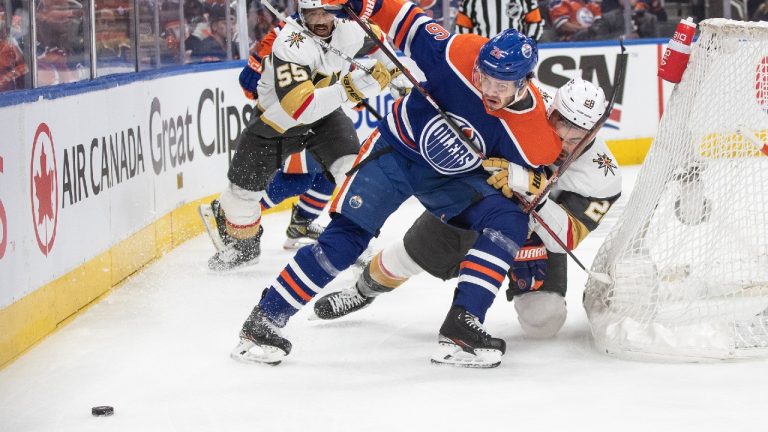On my summer reading list was Bruce Schoenfeld’s "Game of Edges," which carries the tagline “The Analytics Revolution and the Future of Professional Sports.” I recognize we’re all hockey fans not for the wonky statistical reasons, but rather because the game is fast and slick and a blast to both play and watch. But given the change in how we talk about and perceive the game — in a slightly more numbery, quantified way — I wanted to get a better beat on how we got here and where it’s going.
The book focuses on the teams that first adopted newer ways of thinking (think not just of Billy Beane’s "Moneyball" A’s, but of Theo Epstein’s Red Sox and Daryl Morey’s Houston Rockets) and because of that actually experienced certain “edges” from doing so, rather than the late-embracing teams that had to pay attention to data simply to avoid falling behind.
Sometimes trusting the numbers has worked, other times it hasn’t, but one thing it has unquestionably done is change the way the four major North American sports are played.
I listened to the book as someone considering the sport of hockey, and while the only suggestion for our game was half-heartedly offered and not thoroughly considered (a fine enough premise, which was "play your best players more,") I still came away with one really positive takeaway for hockey fans.
Among North America’s four major sports, hockey (and football) stands to benefit most from potential analytics-fuelled changes to its play, at least from the fans' perspective. The game should slowly evolve into an even more exciting version, despite the best efforts of coaches over the past 20 years.
Consider what analytics have done to baseball and basketball.
In baseball, analytics led to the correct conclusion that, in service of scoring the most runs, you’re better off swinging for the fences every cut, even if that means striking out more (it does), as long as it comes with a few more home runs. The numbers have also shown that pitchers shouldn’t go through the opposing batting order a third time, which means guys know they’re coming out sooner, which means they can reach back and throw as hard as they can from the first pitch of the game. That leads to even more strikeouts, and even more walks — particularly while batters also wait for a perfect pitch they can hit out of the park, rather than one they can just get their bat on.
In all, balls in play in baseball are way down, while more people strike out and walk which… is just not that thrilling to watch. The new pitch clock is a direct response to some of this reality.
In basketball, Morey’s Rockets were at the forefront of a movement to acknowledge that three-point baskets were worth 50 per cent more points, so attempting a higher volume of a shot that goes in less often was still worth the trade-off. There are more three-point attempts now than ever in basketball (by light years compared to a decade ago,) and far less of thrilling drives to the paint and contested plays at the rim. More offensive possessions look formulaic and built for efficiency rather than creative and aggressive.
I’ve seen hockey analytics from a variety of angles over the past 10-15 years, and the conclusions for hockey are the opposite of that. There are no supplemental rewards for goals from distance and, in fact, the days of "there’s no such thing as a bad shot," are dead. Bad shots are turnovers, so you need to hang on and — to mix my sports analogies — get to the rim.
It ain’t complicated in hockey: goals go in from in front of the net. Your odds of scoring increase as you get closer to that blue paint, and so teams are incentivized offensively to find more ways to get there. This brings me to the next reality: there are very few cute ways to do that with consistency, yet repeatable ways to do it with force.
The sport continues to get faster and skill levels are through the roof but at the end of the day, goalies have gotten so good you still have to get right to those hotly contested parts of the rink. Very few people can get there with sleight of hand alone.
Now, the downside of this is how teams defend as a result. They want to protect the middle, and not allow anyone to get there. Yes, the more passive players will twirl around the outside and never get in, hesitating to enter those battles for space. But the good teams will find players who’ll do it, and it will remain a valued attribute.
One of the knocks on hockey since the glory days of the '80s, with its high-scoring games and constant physical battles, is that it’s gone soft and doesn’t have the same edge. Part of that is probably good, what with what we know about concussions. But the aforementioned skill has brought the goals back, and the physical part is a reality that the game cannot shake, and will not shake. Despite a grand evolution, the game is unable to become a purely flash-and-dash sport, based on its reward system.
Analysts love players who repeatably create the highest-quality chances, which come from a very specific part of the rink. And so, it’s the shocker of all shockers for those who hate that the analysis of hockey has become more about data than ever before. It just may be that those numbers, more than anything else, encourage more forward-thinking GMs to value the types of players — both in getting to the net and protecting the net-front — who preserve the sport's more physical roots.








COMMENTS
When submitting content, please abide by our submission guidelines, and avoid posting profanity, personal attacks or harassment. Should you violate our submissions guidelines, we reserve the right to remove your comments and block your account. Sportsnet reserves the right to close a story’s comment section at any time.